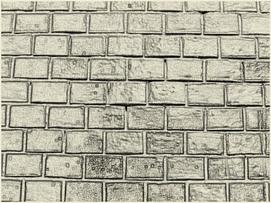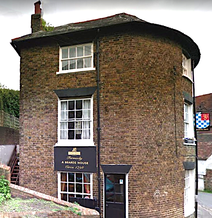Bricks
Bricks have been used to build homes since the Romans introduced them but it was not until the 16th century that it became a popular choice of material However until there could be sufficient brick works and a transport system to support them -which did not happen until the mid 19th century - it could not be the only solution. Once the railway networks were in place brickworks sprung up all over the country and bricks because the choice of the house developer .
How can bricks help us date a house?
Bricks are typically laid in a pattern of headers (the shorter face of the brick) and stretchers (the longer face of the brick).
If they are used up right they are soldiers. Bonding is the arrangement of the bricks to form a wall or column structure. The most common form of bond on historic buildings is Flemish Bond. Modern cavity walls tend to be built in the Stretcher Bond.
If they are used up right they are soldiers. Bonding is the arrangement of the bricks to form a wall or column structure. The most common form of bond on historic buildings is Flemish Bond. Modern cavity walls tend to be built in the Stretcher Bond.

ENGLISH BOND Alternative courses of headers and stretchers and one of the oldest example of brick bonding. This was popular until the late 17th century
The joins between the stretchers are centred on the headers in the course below. This bonding pattern is one of the strongest bonds but more facing bricks are required than other bonds. 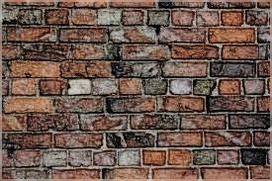
ENGLISH GARDEN WALL
A variation on the English Bond it contains three rows of stretchers and one row of headers. Used from the late 18th century onwards and can be found mostly in the North |
Bricklaying terms you may come acrossStretcher - A brick laid flat with its long narrow side exposed. Header - A brick laid flat with its width exposed. Soldier - A brick laid vertically with its long narrow side exposed Sailor -A brick laid vertically with the broad face of the brick exposed. Rowlock A brick laid on the long narrow side with the short end of the brick exposed. Shiner - A brick laid on the long narrow side with the broad face of the brick exposed |

FLEMISH BOND
Can be found from the late 17th century onwards and less so after the mid 19th centuries. This is one of the most popular brick bonds with alternating headers and stretchers along each course.
Can be found from the late 17th century onwards and less so after the mid 19th centuries. This is one of the most popular brick bonds with alternating headers and stretchers along each course.
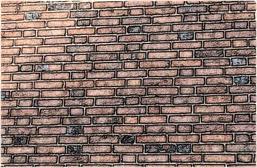
FLEMISH GARDEN WALL BOND
Three stretchers to one header in each row.Most commonly found in West Sussex and Hampshire
Three stretchers to one header in each row.Most commonly found in West Sussex and Hampshire
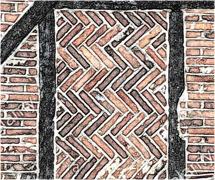
HERRINGBONE BOND
Used sometimes to infill timber panels
Used sometimes to infill timber panels
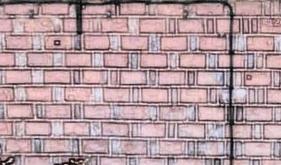
RAT TRAP BOND
This bond van be found on mid 19th century buildings It’s similar to the common “Flemish” bond but instead of putting the bricks on their face, they are placed on their edges.
This bond van be found on mid 19th century buildings It’s similar to the common “Flemish” bond but instead of putting the bricks on their face, they are placed on their edges.
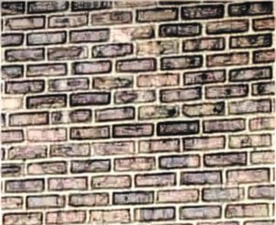
STRETCHER BOND
This pattern is formed by using only stretchers with the bricks in every other course staggered by half a stretcher It is used for most cavity brick walls and was first introduced in the late 19th century and is commonly found today.
.Interestingly whilst it is the easiest repeating pattern to build it is not strong enough to stand alone and has to be tied to a supporting structure
This pattern is formed by using only stretchers with the bricks in every other course staggered by half a stretcher It is used for most cavity brick walls and was first introduced in the late 19th century and is commonly found today.
.Interestingly whilst it is the easiest repeating pattern to build it is not strong enough to stand alone and has to be tied to a supporting structure
FIND OUT MORE
These are just a few of the types of Bond. You can find out more at these excellent sites -
Brickwork Wikipedia https://en.wikipedia.org/wiki/Brickwork
History of Brickmaking -Hungerford Museum
The Brick Directory
Brickwork Bonds – The Heritage Directory
Brickwork Wikipedia https://en.wikipedia.org/wiki/Brickwork
History of Brickmaking -Hungerford Museum
The Brick Directory
Brickwork Bonds – The Heritage Directory
